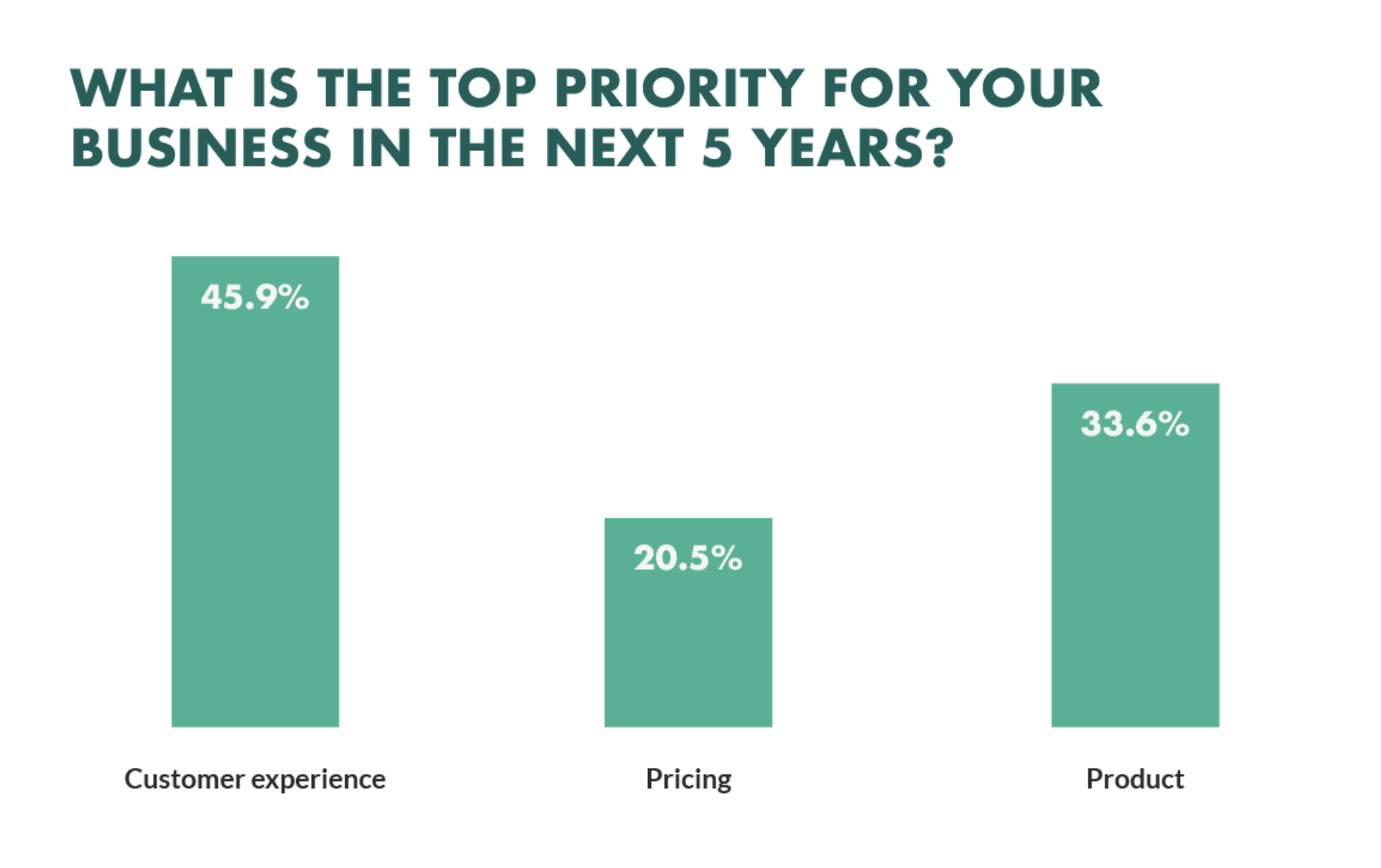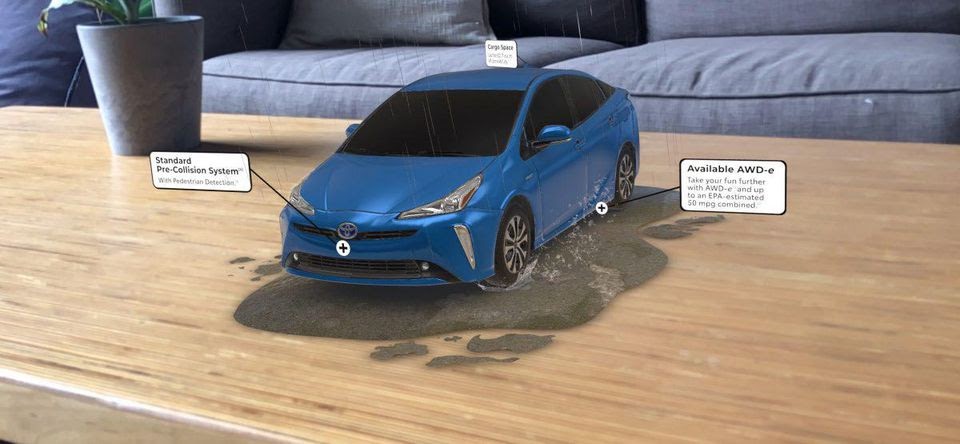What Do Customers Expect in 2025: 6 Data-Driven Predictions
2020 and beyond have brought many challenges and surprises.
Businesses and their customers had to learn how to adapt to the “new normal".
However, not every company managed to adjust to the current way of leading a business. Even some of the biggest companies suffered losses and faced troubles. As of August 31, 163,735 total U.S. businesses on Yelp have closed since the beginning of the pandemic.
But, today, as a brand, you have experience and knowledge of what you should do to keep your company alive even during a global crisis.
We all expect 2021 and beyond to be more predictable and stable years. So now it’s time to look in the future and see what business and customers might face this year. ==
Here are some of the predictions for business in 2021 that will help to meet customer expectations and keep your business growing:
1. Customer Experience is even more important
Customer Experience (or CX) importance is growing every year. 2020 and 2021 are not an exception. And most of the businesses already know this.
“My prediction is that people have less patience and higher expectations of brands. This means that the customer journey must be well designed and optimized based on customer feedback.” Stacy Sherman, Founder at DoingCXRight
The Super Office recently asked 1,920 business professionals to share their number one priority for the next 5 years.
The results?
Customer experience came in first (beating product and pricing).
There is no doubt that people want a better experience. Even more, they are ready to pay more for the better CX.
Other than the opportunity to earn more by investing in CX, businesses are now dealing with a highly competitive situation. With COVID-19, customers became pickier when it comes to choosing brands they want to buy from. Customers will leave the brand if they don't receive the service they expected.
“Data on customer service statistics show that almost 7 in 10 customers within the U.S. end their relationship with a business due to poor service. Nearly half of the customers are also likely to make a switch to a competitor within a day of experiencing poor customer service.”
Given this data, it's vital to understand that CX is crucial. If you don't want to lose your customers, you have to take good care of them – listen to their needs, analyze the feedback, implement what's right for customers and the brand overall.
For many, the ‘consideration of others’ has been a welcomed result of the uncomfortable ride in 2020. And businesses that are truly customer-centric will recognize this as part of what ‘putting customers first’ means. With 2021 likely to be similar to 2020 in many ways, we anticipate this will grow. It could become, for many consumers, part of the decision-making process. Christopher Brooks, Managing Director at Clientship CX
And don't forget to keep an eye on your competitors. Take note of what works for your competitors and where their problem spots are. Analyze the data and improve based on that.
Although your customers won’t love you if you give bad service, your competitors will. @etailinggroup Click To Tweet
2. Self-service works both for brand and customers
Earlier, many people considered self-service as an option for businesses to save money on customer service.
However, now not only companies but customers want self-service options.
Brands can save costs on 24/7 customer service by implementing self-service options like chatbots. Chatbots can help companies save from 30-80% of their customer service spendings. That’s a huge win for brands, especially during COVID-19 and this period of tight budgets.
And now customers also want a good self-service option. More and more people would rather talk to a smart chatbot that can resolve their issues much faster than a call or email to the human customer service representative.
“Modern customers want what they want now. They’ve gotten used to getting their shipments within hours or overnight and now want everything right away. Companies need to meet that demand with quick service and delivery.” Shep Hyken via Blake Morgan Blog
Today, 67% of customers prefer self-service over speaking to a company representative.
Furthermore, 91% of customers would use an online knowledge base if available and tailored to their needs.
The data above shows that self-service is an excellent option for both – brands and customers.
3. Mobile is on it’s highest mark
40% of online transactions are done using a mobile device. Moreover, nearly half of mobile users switch to your competitor after a bad experience with your mobile site.
“Shopping via smartphones is growing exponentially. Customers are becoming more comfortable with devices because the needs of the pandemic required quick adoption to digital channels, including mobile.” Jeannie Walters via GetFeedback Blog
The mobile experience is now very important. However, many companies still ignore that.
60% of companies think they’re providing a good mobile experience, but only 22% of consumers agree with that. (Qualtrics)
That’s a massive amount of disappointed users!
This means there is room for your company to shine through by creating an amazing mobile experience. Mobile-friendly websites, chatbots, and brand apps are what people want to see now from a business. One way to achieve this is by integrating a chat service API like Sendbird, which allows you to embed real-time chat features into your app, providing a seamless and engaging communication channel for your customers.
4. The shift from website to social media
The growth in usage of social media is not a secret. People used social media to contact their friends, and now, people use social media to engage with brands. They can analyze successful social media campaigns to learn and apply best practices, helping them achieve better results in their own efforts.
Here are some stats to prove that:
– 80% of consumers use social media to engage with brands. Hubspot
– 54% of people that have social media use it to research products. Global WebIndex
– 54% of customers prefer social media for customer service over phone or email. Conversocial
Okay, so people want to chat with a brand via social media, but that's not the only reason to invest in social media. Solving an issue on social media is 83% cheaper than resolving it through a call center interaction.
By implementing a chatbot to take over your social media channel, you can save up costs, speed up response time, and improve overall CX. So you save some money and use the platform your customers are more comfortable with.
Win-win.
5. Security, security, and again security.
Shopping online is the new normal, and 30% of buyers plan to shop more online in the future.
“Now that customers have seen the convenience of online ordering and pickup or delivery, they don’t want to go back to normal. Online ordering and a rise in ecommerce offerings from companies not traditionally associated with ecommerce will continue in 2021 and far into the future.” Blake Morgan, Customer Experience Futurist, Bestselling Author, Keynote Speaker
Due to this rise of online, mobile, and social media customer activity, the security risks will grow. The past few years haven't been that great in terms of data privacy. 80% of firms have seen an increase in cyber attacks this year.
Wow, that's a lot of cyberattacks!
So, there is no wonder why it's harder and harder for customers to trust their data to the brand. Not a surprise that 98% of customers are concerned about their personal data and what happens to it.
In 2o21 companies have to make sure that their security measures are up to date. To make your clients trust your company, you have to protect your client's info.
And it is not just about matching all policies and compliances, like GDPR, because it's been a must for a few years now.
Make sure you have your security in place because it will be an important factor in 2021.
30% of firms will increase spending on cloud, security and risk, networks, and mobility. @Forbes Click To Tweet
6. AR is here to save the day
With the coronavirus pandemic, it became complicated to do shopping the “normal" way. That's why companies are experimenting with Augmented Reality (AR) to bring customers the feeling of real shopping, even when at home
“As of Q4 2019, 36% of US consumers had tried augmented or virtual reality. In 2021, we predict that another 10% to 12% of US consumers will experiment with the technology, expanding overall exposure to almost half the US online adult population. (Forrester)”
For example, have a look at Sephora virtual makeup assistant that helps people choose makeup. Thanks to Sephora's facial recognition technology, a person can try out different makeup products in real-time, compare, and share looks, as well as complete the purchase:
As you can see, AR can help companies become closer to their customers, even in social distancing. People can try out makeup, clothes, accessories, shoes, and many more without leaving their homes. You can even experiment with custom shoes to see how they match your style before making a purchase. Moreover, this technology has much bigger potential in retail. Not only fashion retailers can take advantage of AR, but furniture and car sellers can also take note of what Ikea and Toyota did:
The number of online shopping is increasing, which means that 2021 is the perfect year to try and test AR technology for your company.
“The pandemic led brands with traditionally more in-person shopping to embrace options like AR as customers stayed closer to home. Customers have been asking for more options—and it behooves brands to listen.” Jeannie Walters via GetFeedback Blog
As you can see, the online shopping industry is growing and the prediction is that it will keep increasing its popularity. So the main thing business should do is to include a strong digital strategy in their 2021 goals and plans. It’s also important to focus on your customers first. Listen, analyze, and give them what they need and expect.
In 2021, companies need to continue to put people ahead of profits. Efforts in 2020 have been remarkable, but this is just the beginning.@BlakeMichelleM Click To Tweet













